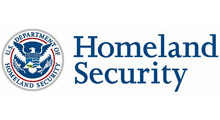 |
| The Transportation Security Administration will deploy AIT units to 28 more airports |
"Deploying advanced imaging technology at these airports strengthens our ability to protect the travelling public in the face of evolving threats to aviation security," said Secretary Napolitano. "Through the Recovery Act, we are able to continue our accelerated deployment of enhanced technology as part of our layered approach to security at airports nationwide."
In addition to the 11 airports announced by Secretary Napolitano on March 5, the Transportation Security Administration (TSA) will deploy AIT units to the 28 airports listed below, starting this summer:
- Albuquerque International Sunport (ABQ)*
- Boise Airport (BOI)
- Brownsville/South Padre Island International Airport (BRO) ?
- Buffalo Niagara International Airport (BUF)
- Corpus Christi International Airport (CRP)
- Denver International Airport (DEN)*
- Detroit Metropolitan Wayne County Airport (DTW)*
- El Paso International Airport (ELP)
- Fort Wayne International Airport (FWA)
- Gulfport-Biloxi International Airport (GPT)
- Harlingen/Valley International Airport (HRL)
- Hartsfield-Jackson Atlanta International Airport (ATL)*
- Houston William P. Hobby Airport (HOU)
- La Guardia International Airport (LGA)
- Laredo International Airport (LRD)
- Lihue Airport (LIH)
- Luis Muñoz Marín International Airport (SJU)
- McAllen Miller Airport (MFE)
- Omaha Eppley Airfield Airport (OMA)
- Orlando International Airport (MCO)
- Phoenix Sky-Harbor International Airport (PHX)*
- Pittsburgh International Airport (PIT)
- Raleigh/Durham International Airport (RDU)*
- Reno-Tahoe International Airport (RNO)
- Ronald Reagan Washington National Airport (DCA)*
- Spokane International Airport (GEG)
- T. F. Green International Airport (PVD)
- Tulsa International Airport (TUL)*
Additional airports will be announced in the future. Many factors are taken into consideration before AIT units are deployed including airport readiness, checkpoint infrastructure, and capacity to ensure privacy protections - including a separate, remotely located room for viewing images.
ARRA, signed into law by President Obama committed more than $3 billion for homeland security projects through DHS and the GSA |
TSA has purchased 450 AIT units with ARRA funding to date, and currently there are 58 AIT units deployed at 24 airports nationwide.
TSA ensures passenger privacy through the anonymity of AIT images - a privacy filter is applied to blur all images; in the operational mode images are permanently deleted immediately once viewed and are never stored, transmitted or printed; and the officer viewing the image is stationed in a remote location so as not to come into contact with passengers being screened.
ARRA, signed into law by President Obama on February 17, 2009, committed more than $3 billion for homeland security projects through DHS and the General Services Administration (GSA). Of the $1 billion allocated to TSA for aviation security projects, $734 million is dedicated to screening checked baggage and $266 million is allocated for checkpoint explosives detection technologies.
To learn more about the DHS Recovery Act projects, visit this link.
* Denotes airports that currently have AIT in place and are receiving additional units using ARRA funding.


















